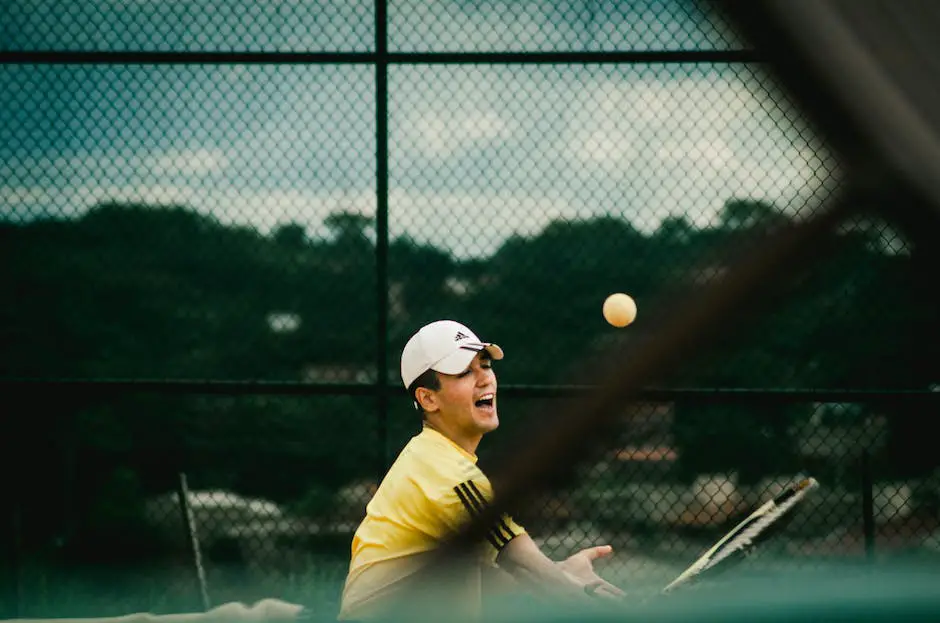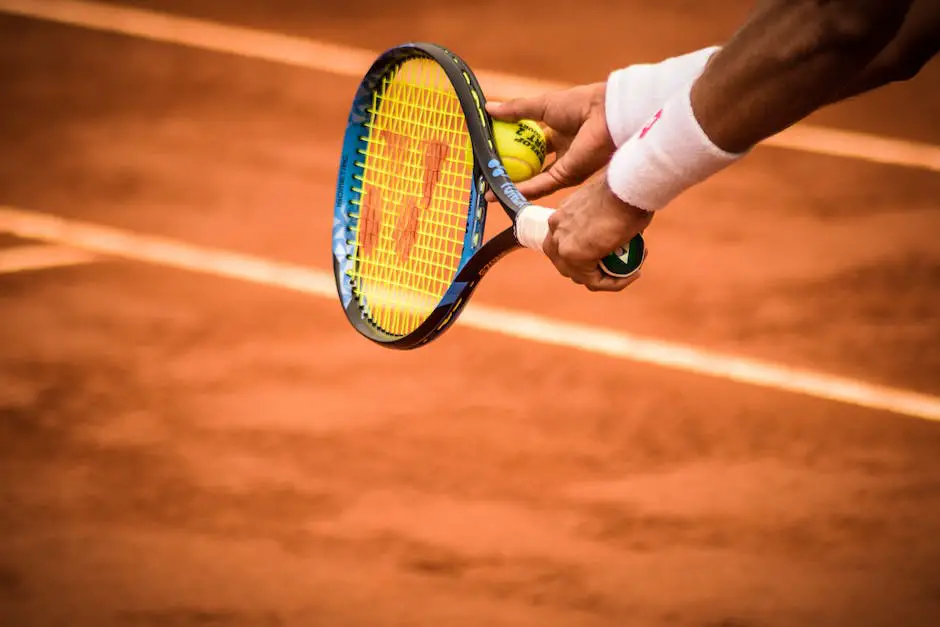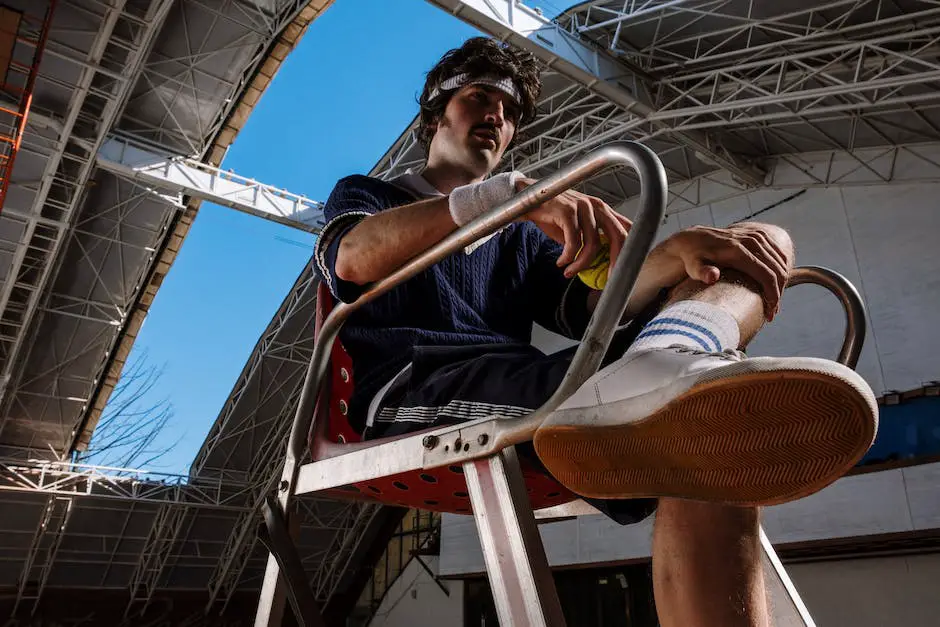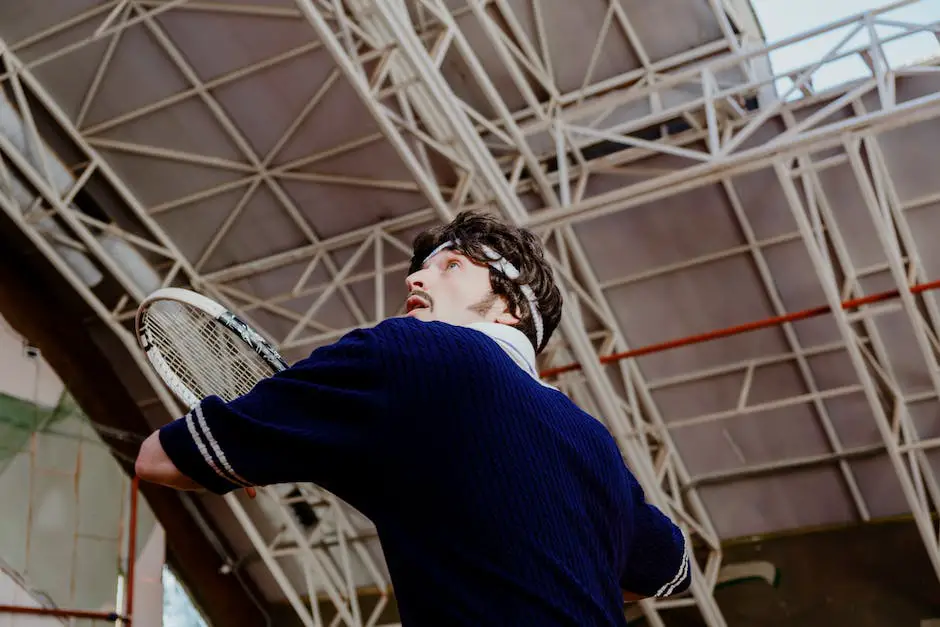With the agility of a predator and the strength of a champion, a tennis player can dominate the court by expertly using volley techniques. The dynamic game of tennis, with its explosive serves and hypnotic rallies, often hinges on a well-timed volley – a masterstroke that can change the flow of the game within seconds. Engulf yourself in the exploration of the tennis volley, a crucial weapon to add to your tennis arsenal. From understanding its fundamental principles, the perfect scenarios and positions to use it, to studying the play tactics of professionals, this discussion broadens your perspective. Enter the intricate world of tennis volley where strategy meets skill, and learn the importance of grip, stance, backswing, and footwork in executing every technique flawlessly.
Understanding Tennis Volley
Understanding a Tennis Volley
A tennis volley is a shot that is hit before the ball bounces on the court. It’s a common technique used during tennis matches, particularly in doubles where players spend more time at the net. The volley is also frequently used as an aggressive offensive move in singles to surprise your opponent and quickly win a point.
When to use a Tennis Volley
Volleys are typically used when a player is at or moving to the net. Some scenarios might include when an opponent has hit a weak groundstroke or floating return, giving the player time to approach the net and hit a volley. Other ideal times for a volley include when you’ve hit a strong serve and are following it in, intending to volley the return, or when your opponent is out of position – hitting a quick volley can exploit their poor positioning and give you the point.
How to Execute a Tennis Volley
To execute a perfect volley, stand with your feet shoulder-width apart and your knees slightly bent. Your racket should be held out in front of you, with the head above the net. As the ball approaches, step into it and hit it cleanly before it bounces. Aim to meet the ball with the center of the racket for a smooth, controlled shot. Volleys should be short, crisp strokes, without much backswing or follow through.
Scenarios and Court Positions for Volleying
Preferably, you’ll want to perform a volley when you’re near the net. The center of the court, close to the net, gives you a wide range of angles and directions to send your volley shot. Being near the net helps to cut down the angles your opponent has available for their shot, increasing the chances of your volley winning the point.
Examining Professional Volley Techniques
Often, watching professional players can provide insight to amateur players seeking to improve their techniques. One of the best volleyers in professional tennis is Roger Federer. He often uses a ‘cut volley’, a strategy where he slices under the ball at the moment of contact to impose backspin, making it more challenging for an opponent to return. Serena Williams is also known for her powerful and precise volleys which she executes with a swift, direct punching motion. Examining these techniques can provide valuable tips for players who are working on their volley technique.
Remember, volleyball techniques are best learnt through practice.
Make sure to practice your volleys regularly during practice and games. Keep watching professional matches for more insights, and don’t be afraid to experiment with different types of volleys to see what works best for you.

Basic Volley Techniques
Understanding the Importance of Proper Grip
The first fundamental step in establishing a solid tennis volley is gripping the racket properly. For a volley, the continental grip is most effective. It is achieved by positioning the base knuckle of the index finger on bevel 2 of the racket handle, leaving the remaining fingers to naturally spread around the racket. You should be able to see a “V” shape formed by your thumb and index finger. This grip accommodates both forehand and backhand volleys, providing the right amount of flexibility and stability needed for these rapid, reflex-based shots.
Adopting the Correct Stance
The ready stance is essential to being prepared to perform a tennis volley at any time. Stand with your feet shoulder-width apart, knees slightly bent, leaning forward on the balls of your feet. Your weight should be evenly distributed. This position allows for quick reaction time and efficient movement in any direction. Keep your racket in front of you, elbows slightly bent, with both hands on the racket, ready to volley using the forehand or the backhand.
Mastering the Perfect Backswing
Unlike ground strokes, the backswing for a volley is minimal because there is no time to take a full swing at the ball. The power in volleying comes from your legs and torso, not your arms. Instead, the focus should be on a blocking or punching action. As the ball approaches, instead of pulling your arm back to wind up for a swing, simply twist your shoulders while keeping the racket out in front.
Implementing Effective Footwork
Quick, agile footwork is a significant factor in volley success. You must be able to swiftly move forward, backward, or to the side to position yourself for an optimal volley. The split-step, a small hop taken as your opponent hits the ball, should be the basis of your footwork. This allows you to react more quickly and efficiently to your opponent’s shot. Forward movement is particularly crucial in a volley as it helps add power and depth to your shot.
Impact of Body Movement on Volley
Effective body movement enhances the efficiency and effectiveness of your volley. Although the volley motion is primarily accomplished with the arm and wrist, using your whole body–kinetic chain–can add power and control. This involves coordinating your footwork, leg drive, torso rotation, and arm and wrist action. Twist your upper body towards the net as you strike the ball and lean into your shot. This body follow-through is especially important in giving your volley speed, direction, and depth.
By properly mastering these key components of volley technique—grip, stance, backswing, footwork, and body movement—you can effectively control your shots, react quickly to your opponent’s returns, and keep your volley game strong and unpredictable.

Advanced Volley Techniques
Understanding Advanced Volley Techniques
Once you have mastered the basic techniques of volleying in tennis, progressing onto advanced volley techniques will significantly boost your performance on the court. Two key advanced techniques are the half volley and touch volley.Mastering the Half Volley
The half volley, while challenging, can be a great weapon in your tennis game. Here’s how to execute it:
- Simultaneously See and React: You need to predict if a ball is coming straight or bouncing before you. The key lies in quick reflexes but also advanced judgment skills.
- Forward Stance: Stand close to the net. Unlike the basic volley where your body stays sideways, lean forwards facing the net for a half volley.
- Low Racket: Keep the racket lower than the expected contact point to let the ball meet with the middle of your racket strings for a perfect shot.
- Smooth Direction Change: As you’ll be hitting the ball soon after it bounces, gently redirect the ball’s path without making a full swing. This makes the half volley a precise aiming exercise.
Perfecting the Touch Volley
The touch volley is an effective technique to change the pace and throw off your opponent. Here’s how to do it:
- Scanning Opponent: Constantly read your opponent’s position. This is feasible when your opponent is off-court, or you anticipate they can’t reach a slow-pace shot.
- Soft Grip: Unlike power volleys, hold the racket with a soft grip to absorb ball energy and drop it near the net with reduced pace.
- Short Compact Swing: Use a shorter backswing and follow through. This allows you to maintain control over the direction and pace of the volley.
- Open Racket Face: This enables the ball to travel in an upward direction, making it hard for your opponent to reach.
Applying These Techniques in Game Scenarios
Both these advanced techniques are best utilized when you’re near the net with less time to react. Use half volleys when your opponent delivers a fast ball that bounces just in front of you and you are prepared for a quick return with controlled path redirection. On the other hand, touch volleys suit situations where you plan to decrease the ball pace to trick your opponent by creating uncertainty and chaos. These techniques need to be executed with precision, timing, and tactical judgment. Recognize the right moment to execute them for disrupting opponent’s rhythm and gaining advantage in the match.

Practicing Tennis Volley
Understanding Tennis Volley Fundamentals
Tennis volley refers to a shot where the ball is hit before it bounces on the court. It’s an essential technique for aggressive play and is commonly used when a player is near the net. To perform a volley, stand ready with your knees slightly bent and your racket in front of you. As the ball approaches, step forward into the shot, using your shoulder and arm to guide the direction of the ball.
Forehand Tennis Volley Technique
In executing a forehand volley, your racket should remain out to your side, with your non-dominant hand pointing towards the ball to aid in aim. As the ball nears, pivot your shoulders to the side, and push your racket forward, stepping into your shot using your back foot. Remember not to swing your racket like a regular forehand, instead make a short, punching motion towards the ball. Focus on accuracy rather than power when hitting a volley.
Backhand Tennis Volley Technique
For a backhand volley, again maintain your racket high and towards your side, with your non-dominant hand pointing at the ball. Use your shoulder rotation to guide the direction of the ball, keeping your wrist firm during contact. Just like with the forehand volley, avoid large swings and focus on “punching” the ball with the back of your racket.
Practicing Volley Drills
To practice these techniques, volley drills can be used and they come in multiple forms. Reflective drills are simple yet effective: fire consistent forehand and backhand volleys against a wall to enhance your reaction time and prediction of ball path. Try altering the distance between you and the wall to simulate different volleying scenarios. Another common practice drill involves a partner or tennis ball machine delivering consistent hits towards you. This allows you to practice volley in a controlled setting.
Incorporating Volley into Match Play
After mastering the volley technique, it’s time to incorporate it into your match play. Start by recognizing suitable situations to use a volley such as when your opponent has been driven far from the net or is out of balance. Remember, volleys are typically high-risk, high-reward shots, so using them at the correct time is crucial.
Review and Correct Your Volley
Optimal volley technique requires continued revision and correction. Record yourself during practice or matches and analyze your volley technique. Look at your footwork, racket preparation, contact point, and follow-through for any necessary adjustments. Engage a tennis coach for professional feedback or use online platforms to compare your techniques with pros. This is an ongoing process, with each review and correction bringing you closer to perfecting your volley.

Once the fundamentals have been mastered, you will be ready to venture into the realm of advanced volley techniques, such as the half volley and touch volley. Learning is only the first step – translating the knowledge into action is where the real challenge lies. Practicing these acquired techniques through regular drills and exercises will help you hone your skills, correct flaws, and eventually integrate these techniques into your game. The art of tennis volleying, like a well-orchestrated symphony, requires precision, timing, and harmonious coordination delivering the right shot at the right moment. Step onto the court with newfound confidence, ready to face any game scenario with expertise in these techniques that you have strived to learn.